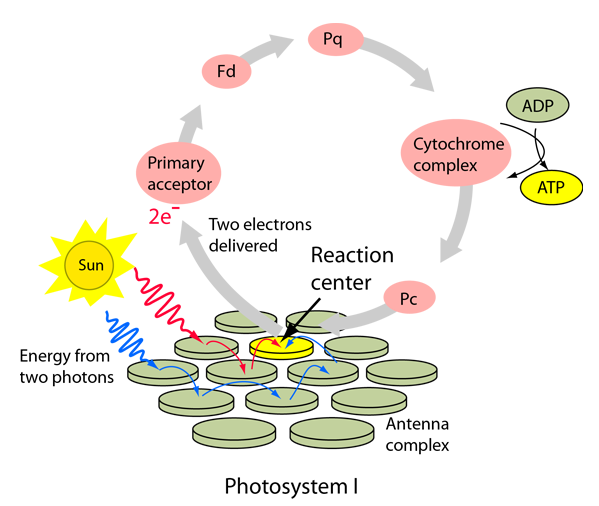Antenna Complexes for Photosynthesis
The capture of light energy for photosynthesis is enhanced by networks of pigments in the chloroplasts arranged in aggregates on the thylakoids. These aggregates are called antennae complexes. Evidence for this kind of picture came from research by Robert Emerson and William Arnold in 1932 when they measured the oxygen released in response to extremely bright flashes of light. They found that some 2500 molecules of chlorophyll was required to produce one molecule of oxygen, and that a minimum of eight photons of light must be absorbed in the process.
 |
The model that emerges is that of some 300 chlorophyll molecules and 40 or so beta carotenes and other accessory pigments acting as a light harvesting antenna surrounding one chlorophyll a molecule that is a part of an action center. A photon is absorbed by one of the pigment molecules and transfers that energy by successive flourescence events to neighboring molecules until it reaches the action center where the energy is used to transfer an energetic electron to an electron acceptor. |
|
The fluorescence model would suggest that each transferred photon has a longer wavelength and lower quantum energy with some energy being lost to heat. |
 |
When a photon reaches the chlorophyll a in the reaction center, that chlorophyll can receive the energy because it absorbs photons of longer wavelengths than the other pigments. Two types of chlorophyll centers have been identified, and are associated with two protein complexes identified as Photosystem I and Photosystem II.
| Energy cycle in living things |
Photosynthesis Concepts
Reference
Moore, et al.
Ch 7
Karp
Ch 6
| HyperPhysics***** Biology | R Nave |




